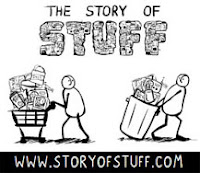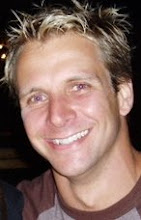
I will use this picture in the my environment class when we do a unit on the power of consumerism. My instructions to the students might go something like this:
- Look at the picture and what immediately comes to mind.
- Look at the items, are they similar?
- What the deal with the shopping cart and the trash can?
- Can you think of items you bought that are now in the trash?
- Is this type of behavior sustainable?
- What are the impacts? - Depleting resources, more waste, consumer society, etc
- Are you are part of the problem or solution?
- What can you do to move towards the side of 'solution'?

